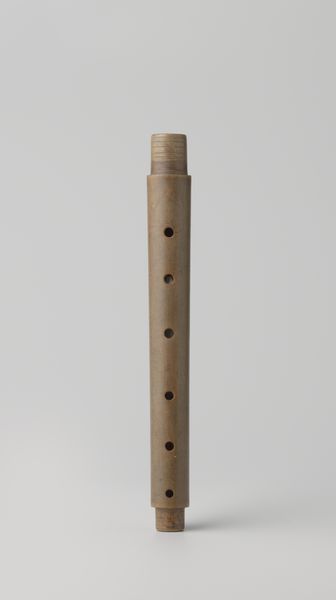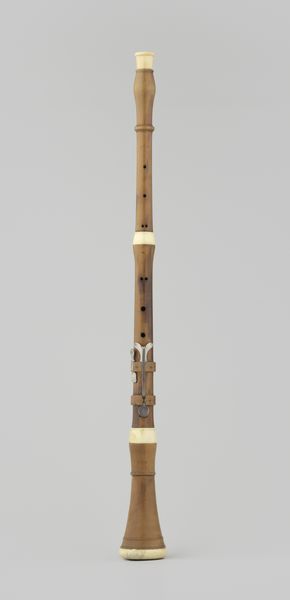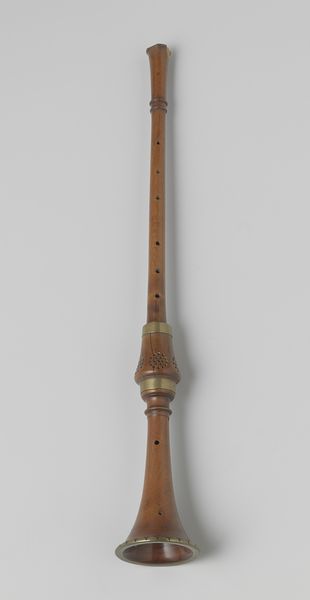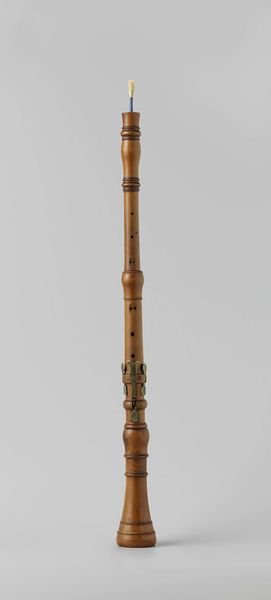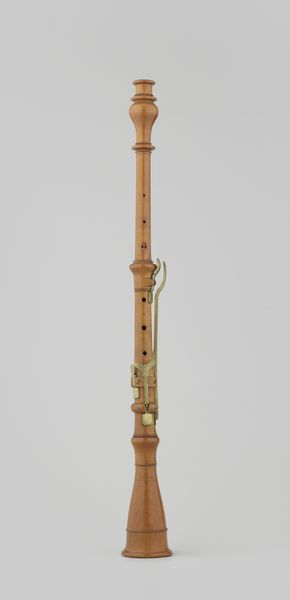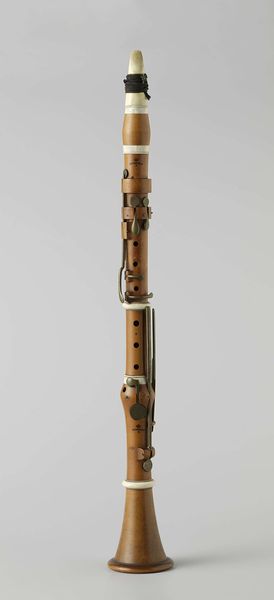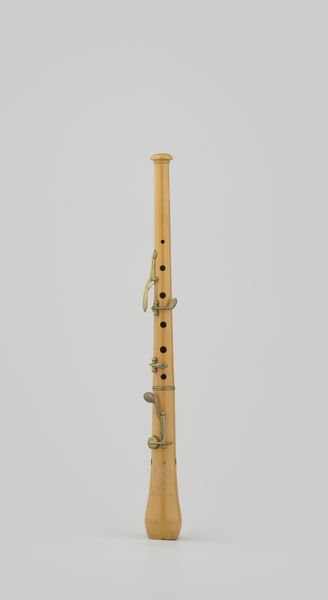
sculpture, wood
#
baroque
#
sculpture
#
wood
#
decorative-art
Dimensions: length 690 mm, diameter 70 mm
Copyright: Rijks Museum: Open Domain
Curator: This is a tenor recorder crafted around 1720 by Peter Bressan, a prominent instrument maker of the Baroque era. Editor: Oh, what a charming thing. It’s a dark, warm color, the wood. Like old honey. So slim, almost modest, yet you know it’s made for creating music that could fill a cathedral. Curator: Indeed. Bressan, though of French origin, established himself in London and catered to the growing demand for high-quality musical instruments among the aristocracy and burgeoning middle class. The recorder became a marker of cultural refinement. Editor: You know, looking at it now, I imagine the player holding it so carefully, the cool smoothness of the wood against their fingers. Maybe they’re practicing a sonata by candlelight in a room full of gilt furniture. So atmospheric. It almost makes me want to learn the recorder, despite the squeaky reputation they often have. Curator: Well, the quality of Bressan’s instruments elevated the recorder's status. The intricate ivory accents, though purely decorative, showcase the instrument's value and appeal within Baroque society, highlighting music as a refined cultural practice accessible to a broadening segment of society, rather than being exclusive to court. Editor: There's something undeniably melancholic about seeing musical instruments from past eras. They're frozen mid-song, aren't they? It is a ghost of the sounds it made and the space that once echoed with music. A little whisper across time, urging us to listen more carefully to the present. Curator: Precisely. Understanding an object like this recorder reveals much about social transformations around arts consumption and the status of cultural expression in 18th-century life. Editor: Well, it has definitely encouraged me to embrace this historical moment through the sensory richness it represents. Maybe after this, I will get myself a recorder! Curator: I encourage that sentiment completely. It certainly enhances our appreciation of objects when they spark new desires for engagement.
Comments
rijksmuseum about 2 years ago
⋮
Recorders flourished during the Renaissance and Baroque periods. They were made in sets comprising different voices, as in a choir: soprano, alto, tenor, and bass. As the 18th century wore on, the recorder became old-fashioned. Except for this rare tenor recorder by the famous Peter Bressan, all those shown here were made in the Netherlands.
Join the conversation
Join millions of artists and users on Artera today and experience the ultimate creative platform.



